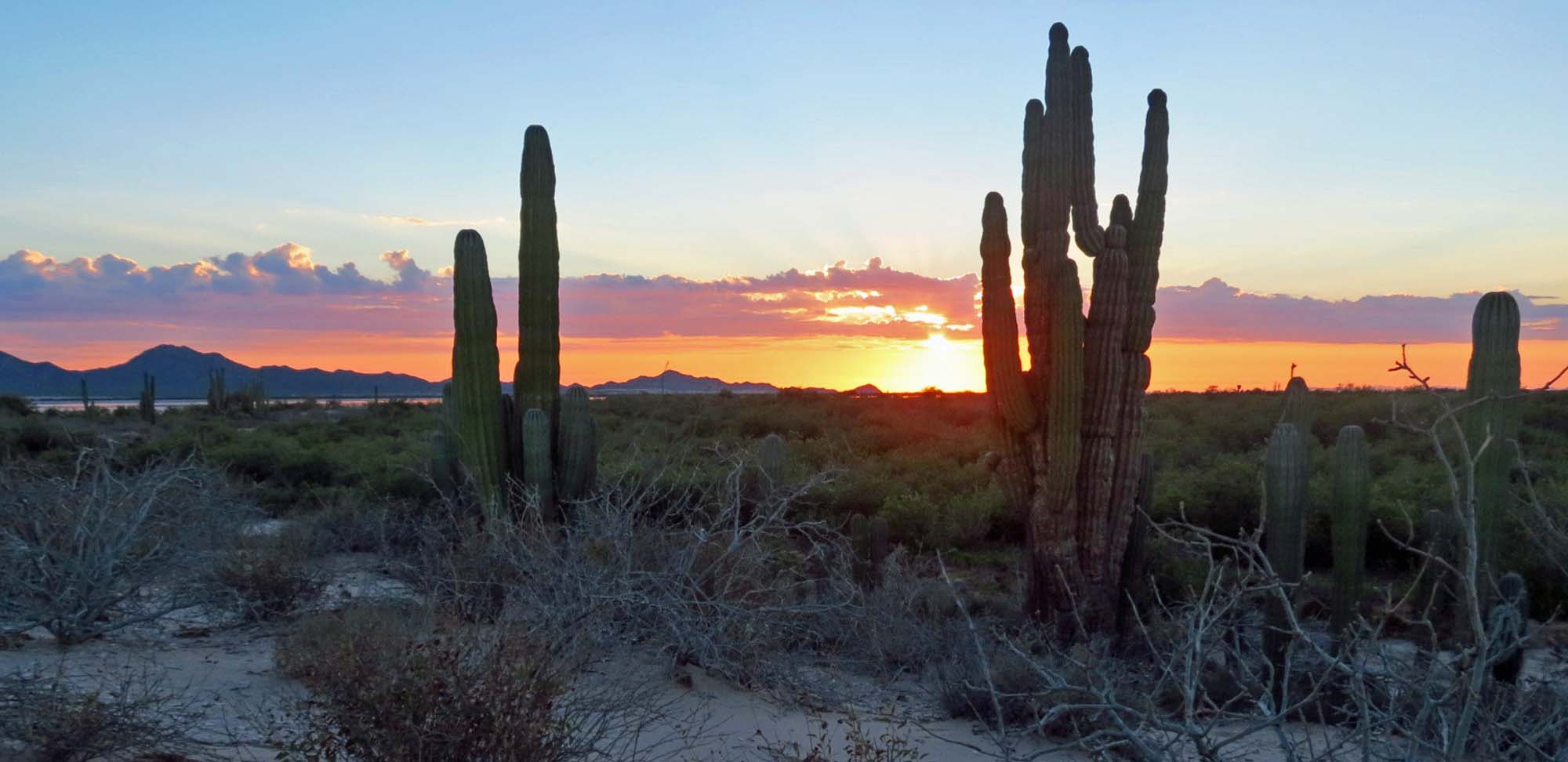Roughly six million years ago, the northward tug of the Pacific Plate (and, no, we're not talking dinner plates!) tore the Baja Peninsula from mainland Mexico, leaving an enormous gulf strewn with desert islands. This body of water is the Gulf of California (or the Sea of Cortez), and it happens to be remarkably rich in marine life. The islands concentrated about one-third down the Gulf are known as the "Midriff Islands," and this region is particularly productive due to upwelling. As tidal currents slosh up and down the Gulf, they collide with the islands, forcing cold, nutrient-rich water to the surface where phytoplankton bloom. These are food for zooplankton, which in turn feed fish, seabirds, and marine mammals -- very large marine mammals. Fin Whales, Humpbacks, and the occasional Blue Whale will turn up along with Long-beaked Common Dolphins and California Sea Lions to feed on schools of anchovies, while Blue-footed and Brown boobies dive-bomb them from above. Some of the other birds we might find on an offshore boat trip include the adorable Craveri’s Murrelet, which breeds in rock crevices on the Midriff Islands, Yellow-footed Gull, Brandt’s Cormorant, Red-billed Tropicbird, Black and Least storm-petrels, Black-vented Shearwater, jaegers, phalaropes loons and grebes.
The numerous estuaries, known as "esteros" in Mexico, that line the Sonora Coast are important stop-over sites for migrating shorebirds and waterfowl. Many thousand Brant and Redheads spend the winter in the shallow eelgrass waters, and swarms of sandpipers of all sizes line mudflats dotted with Reddish Egrets, Yellow-crowned Night-Herons, Roseate Spoonbills, and White Pelicans. The mangroves that encircle the estuaries are home to Mangrove Warblers and Ridgway's Rails, which sometimes emerge to snatch fiddler crabs from the mud flats.
The "Coastal Subdivision" of the Sonoran Desert here is home to a unique set of plants, some of which are truly astonishing. The Cardon Cactus, the largest of them all, forms colossal forests along sandy washes. To be among these giants is truly awe-inspiring. Some of the desert birds we'll be looking for include both Elegant and Gambel's quail, Costa's and Broad-billed hummingbirds, Five-striped Sparrow, Black-capped and Black-tailed gnatcatchers, Nutting's and Ash-throated flycatchers, Bendire's and Curve-billed thrashers, Gilded Flicker, Lark Bunting, Cactus Wren, and Gray Vireo, which feeds on the fruit of Elephant Tree (Bursera microphylla) during the winter.
For this week-long tour we'll be based in the town of Bahia Kino, where Prescott College (in Prescott, Arizona) has a research facility called the Kino Bay Center for Cultural and Ecological Studies.The Center is a hub where student groups and researchers come to study the rich marine and desert life of the Gulf of California. We'll stay at a hotel in town, but the Center will be hosting us for boat trips to explore the Midriff Islands and coastal estuaries. We'll learn about the various research programs at the Center on marine mammals, waterbirds, and estuarine ecology, as well as the ongoing collaboration with the Comcaac (also called "Seris"), the indigenous people in this region of Mexico.
And we might as well mention the wonderful food. We'll enjoy fresh fish tacos, delicious hand-made tamales, and some of the best flour tortillas in all of Mexico (now that's saying something!). So, strap on your sandals, put on a hat, and pick up your binocs: an exciting week along Mexico's sunny desert coast awaits!
Select the KEY INFO tab or click here for our itinerary plus space requests, status, fees, limits, and guides for any departure.<


